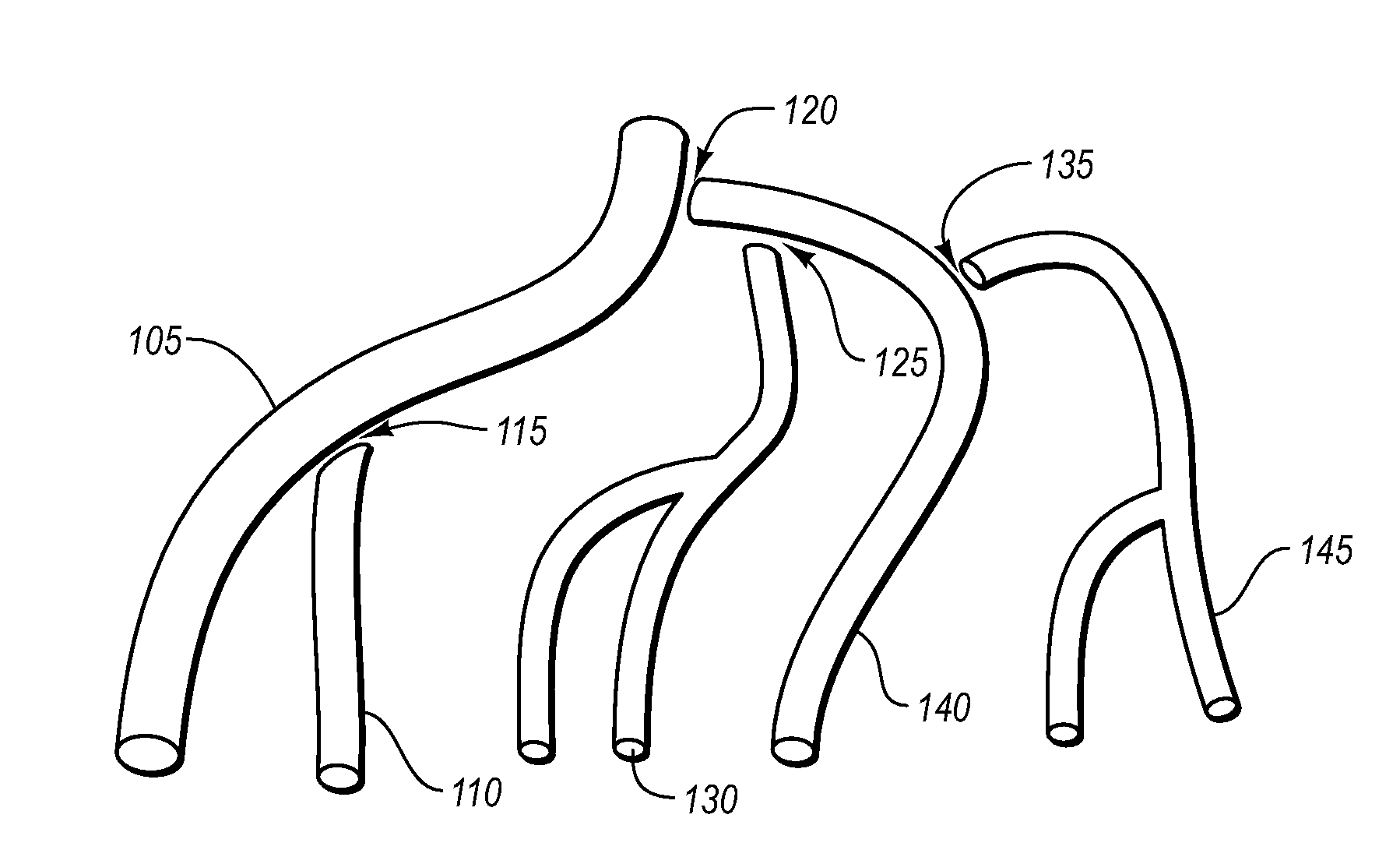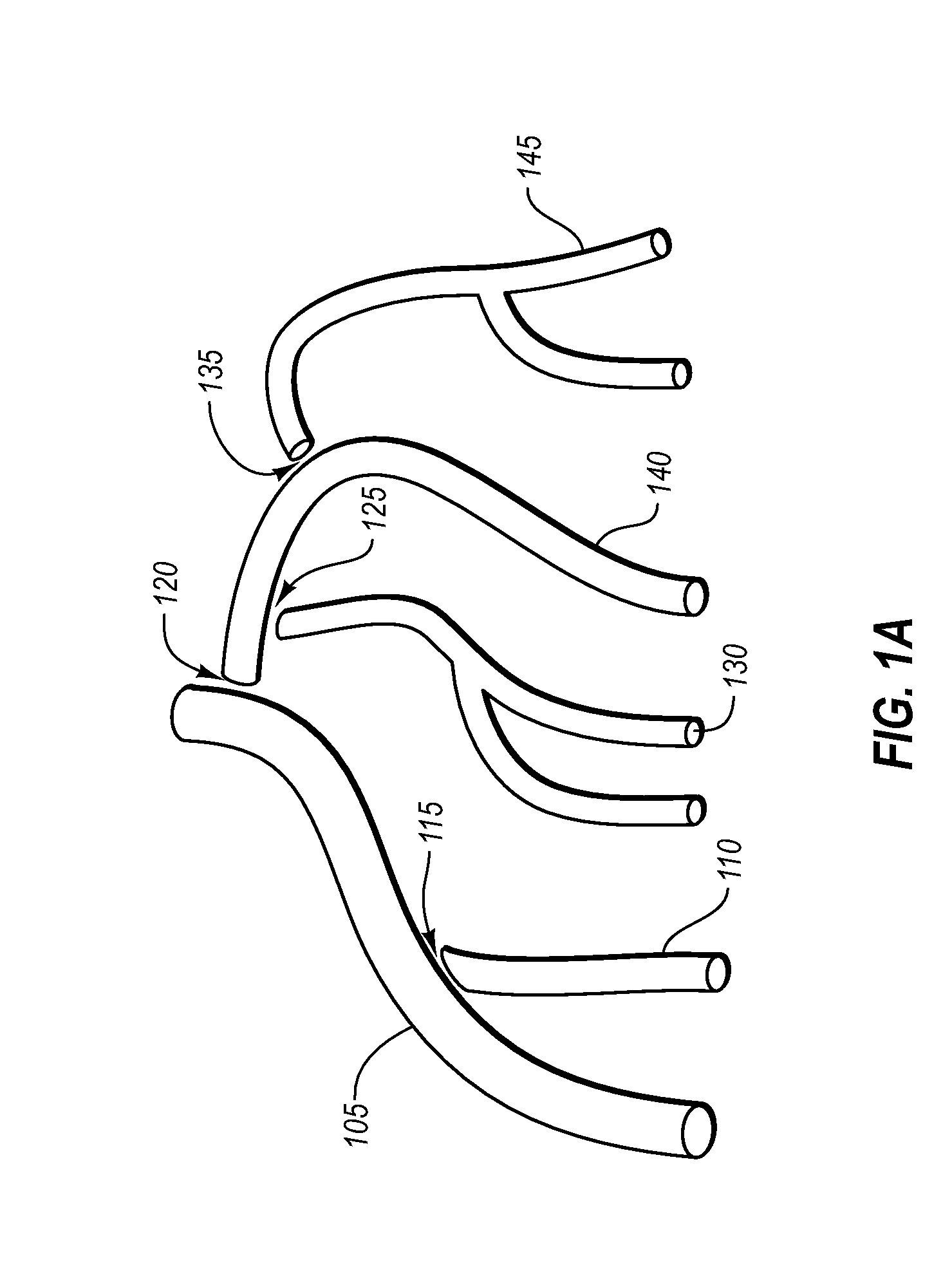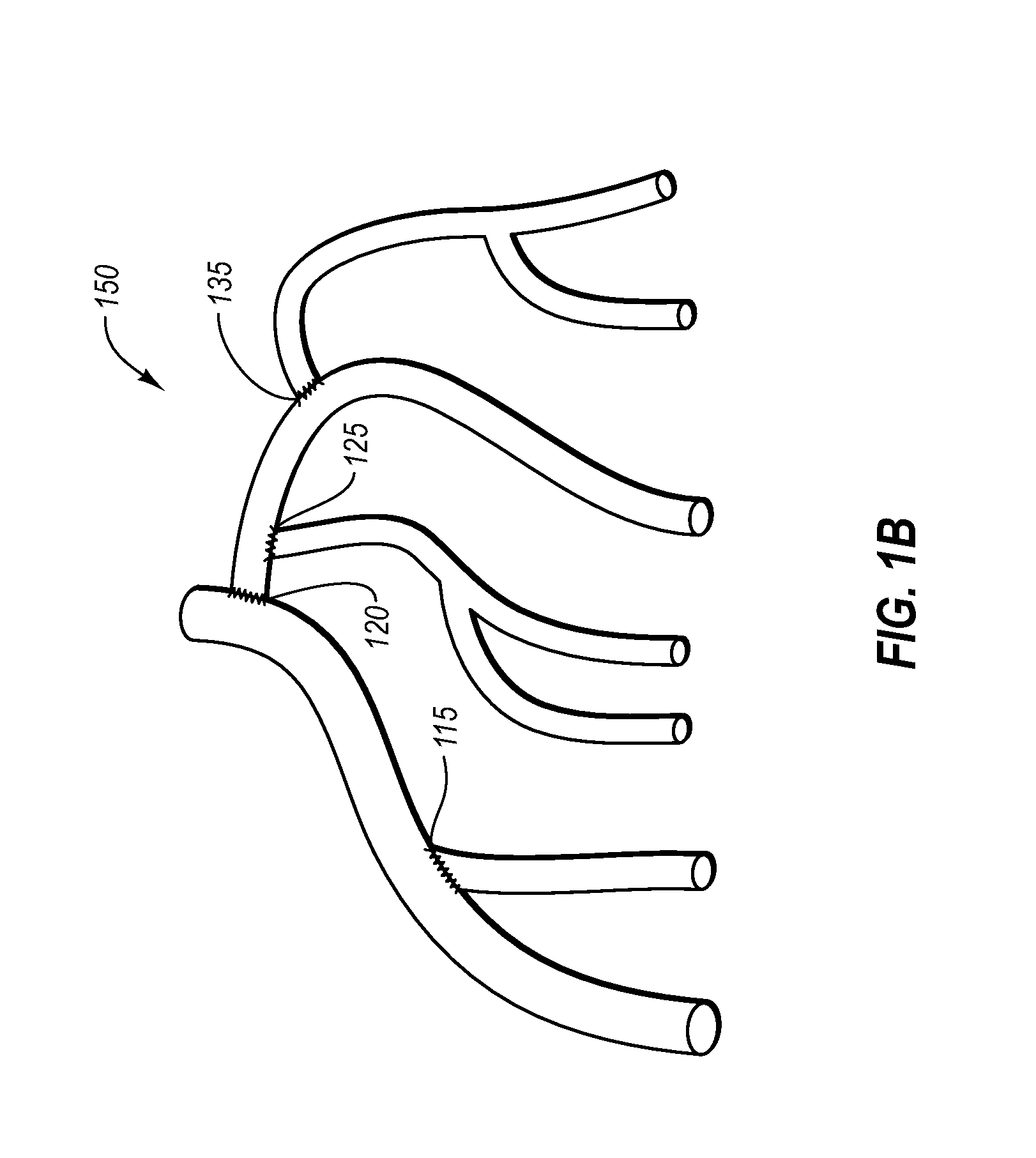Forming vascular diseases within anatomical models
a technology of anatomical models and vascular diseases, applied in the field of forming vascular diseases within anatomical models, can solve the problems of poor ability to replicate tissue, models are not desirable, and the anatomy is expensive and not always easily ascertainable, and achieve the effect of increasing radial strength
- Summary
- Abstract
- Description
- Claims
- Application Information
AI Technical Summary
Benefits of technology
Problems solved by technology
Method used
Image
Examples
Embodiment Construction
[0035] The present invention extends to methods and systems that provide one or more of the following: (i) tight, non-brittle connections of PVA pieces in order to constructively form simulated complex anatomical models; (ii) anatomical models with increased radial strength; (iii) anatomical models with simulated vascular diseases that more accurately replicate such abnormalities therein; and (iv) mechanisms for creating multiple different anatomical models using partially processed, pre-shaped pieces of PVA.
[0036] Prior to discussing embodiments in great detail, it will be beneficial to define terms that will be used consistently herein. First, the term “liquid PVA” or “PVA solution” refers to poly(vinyl alcohol) mixture in its liquid form. The PVA may be heated somewhere between 50-150° C. and comprises some form of PVA, water, dimethylsulfoxide (DMSO) mixture; however, other well known temperatures and mixtures of PVA solution may be implied herein. For example, the PVA solution...
PUM
| Property | Measurement | Unit |
|---|---|---|
| Pressure | aaaaa | aaaaa |
| Diameter | aaaaa | aaaaa |
| Structure | aaaaa | aaaaa |
Abstract
Description
Claims
Application Information
 Login to View More
Login to View More - R&D
- Intellectual Property
- Life Sciences
- Materials
- Tech Scout
- Unparalleled Data Quality
- Higher Quality Content
- 60% Fewer Hallucinations
Browse by: Latest US Patents, China's latest patents, Technical Efficacy Thesaurus, Application Domain, Technology Topic, Popular Technical Reports.
© 2025 PatSnap. All rights reserved.Legal|Privacy policy|Modern Slavery Act Transparency Statement|Sitemap|About US| Contact US: help@patsnap.com



